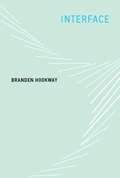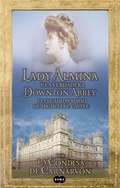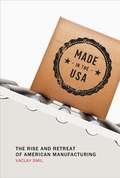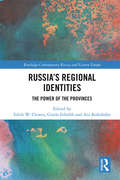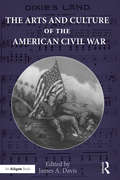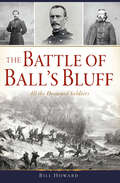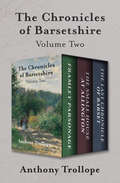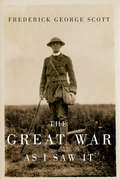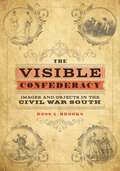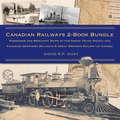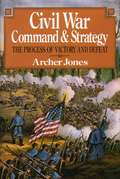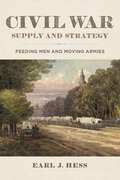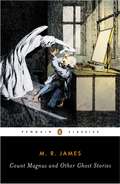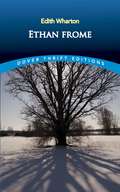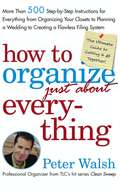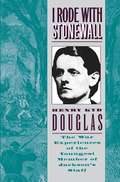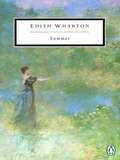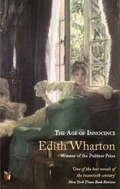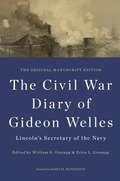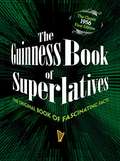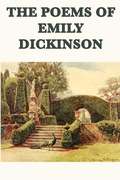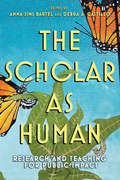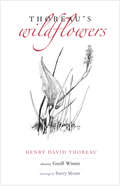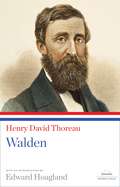- Table View
- List View
Flatland
by by Edwin A. Abbott William F. Lindgren Thomas F. Banchoff by Edwin A. Abbott William F. Lindgren Thomas F. BanchoffFlatland, Edwin Abbott's story of a two-dimensional universe, as told by one of its inhabitants who is introduced to the mysteries of three-dimensional space, has enjoyed an enduring popularity from the time of its publication in 1884. This fully annotated edition enables the modern-day reader to understand and appreciate the many 'dimensions' of this classic satire. Mathematical notes and illustrations enhance the usefulness of Flatland as an elementary introduction to higher-dimensional geometry. Historical notes show connections to late-Victorian England and to classical Greece. Citations from Abbott's other writings as well as the works of Plato and Aristotle serve to interpret the text. Commentary on language and literary style includes numerous definitions of obscure words. An appendix gives a comprehensive account of the life and work of Flatland's remarkable author.
Interface
by Branden HookwayIn this book, Branden Hookway considers the interface not as technology but as a form of relationship with technology. The interface, Hookway proposes, is at once ubiquitous and hidden from view. It is both the bottleneck through which our relationship to technology must pass and a productive encounter embedded within the use of technology. It is a site of contestation -- between human and machine, between the material and the social, between the political and the technological -- that both defines and elides differences. A virtuoso in multiple disciplines, Hookway offers a theory of the interface that draws on cultural theory, political theory, philosophy, art, architecture, new media, and the history of science and technology. He argues that the theoretical mechanism of the interface offers a powerful approach to questions of the human relationship to technology. Hookway finds the origin of the term interface in nineteenth-century fluid dynamics and traces its migration to thermodynamics, information theory, and cybernetics. He discusses issues of subject formation, agency, power, and control, within contexts that include technology, politics, and the social role of games. He considers the technological augmentation of humans and the human-machine system, discussing notions of embodied intelligence. Hookway views the figure of the subject as both receiver and active producer in processes of subjectification. The interface, he argues, stands in a relation both alien and intimate, vertiginous and orienting to those who cross its threshold.
Lady Almina y la verdadera Downton Abbey: El legado perdido de Highclere Castle
by Lady Fiona CarnarvonLady Fiona Carnarvon, la octava condesa, relata la extraordinaria historia del auténtico Downton Abbey, aún más fascinante que la ficción. Lady Fiona Carnarvon se convirtió en señora de Highclere Castle -escenario de la exitosa serie Downton Abbey- hace ocho años. En este periodo ha llegado a sentir fascinación por la interesante historia de Highclere y por las extraordinarias personas que han residido allí a lo largo de los siglos. Pero una persona en particular captó el interés de Fiona: lady Almina, la quinta condesa de Carnarvon. Almina fue la hija ilegítima del magnate de la banca Alfred de Rothschild. Fue su única hija y objeto de devoción por su parte. A los diecinueve años, con una inmensa dote, se casó con el quinto conde de Carnarvon. Al principio, la vida en Highclere transcurrió en una vertiginosa sucesión de suntuosos banquetes para quinientas personas e incluso algún que otro invitado real. Almina supervisó a ochenta empleados, muchos de los cuales procedían de familias que llevaban generaciones trabajando en Highclere. Pero el estallido de la Primera Guerra Mundial cambió para siempre la vida en Highclere, tanto arriba como abajo. Los avatares de la historia hicieron que Almina y el personal de Highclere se vieran envueltos en uno de los periodos más turbulentos del pasado siglo. Almina tuvo que hacer acopio de todo su arrojo para garantizar la supervivencia de su familia, del personal y del castillo. Esta es la extraordinaria historia de una época desaparecida. Sin embargo, Highclere permanece y en este libro lady Carnarvon narra la andadura de Almina y de su familia, el legado y la historia de una de las casas solariegas victorianas más exquisitas de Inglaterra.
Made in the USA
by Vaclav Smil"There is probably no other writer whose books I anticipate with more enthusiasm than Vaclav Smil. He brings remarkable insight to every topic he examines, combining his vast knowledge of science and energy, history and business to address some of the most pressing issues we face today. So Im pleased he will be turning that keen intellect to the subject of manufacturing in the U. S. "--Bill GatesIn "Made in the USA," Vaclav Smil powerfully rebuts the notion that manufacturing is a relic of predigital history and that the loss of American manufacturing is a desirable evolutionary step toward a pure service economy. Smil argues that no advanced economy can prosper without a strong, innovative manufacturing sector and the jobs it creates. Reversing a famous information economy dictum, Smil argues that serving potato chips is not as good as making microchips. The history of manufacturing in America, Smil tells us, is a story of nation-building. He explains how manufacturing became a fundamental force behind Americas economic, strategic, and social dominance. He describes American manufacturings rapid rise at the end of the nineteenth century, its consolidation and modernization between the two world wars, its role as an enabler of mass consumption after 1945, and its recent decline. Some economists argue that shipping low-value jobs overseas matters little because the high-value work remains in the United States. But, asks Smil, do we want a society that consists of a small population of workers doing high-value-added work and masses of unemployed? Smil assesses various suggestions for solving Americas manufacturing crisis, including lowering corporate tax rates, promoting research and development, and improving public education. Will America act to preserve and reinvigorate its manufacturing? It is crucial to our social and economic well-being; but, Smil warns, the odds are no better than even.
Russia's Regional Identities: The Power of the Provinces (Routledge Contemporary Russia and Eastern Europe Series)
by Ani Kokobobo Edith W. Clowes Gisela ErbslöhContemporary Russia is often viewed as a centralised regime based in Moscow, with dependent provinces, made subservient by Putin’s policies limiting regional autonomy. This book, however, demonstrates that beyond this largely political view, by looking at Russia’s regions more in cultural and social terms, a quite different picture emerges, of a Russia rich in variety, with different regional identities, cultures, traditions and memories. The book explores how identities are formed and rethought in contemporary Russia, and outlines the nature of particular regional identities, from Siberia and the Urals to southern Russia, from the Russian heartland to the non-Russian republics.
The Arts and Culture of the American Civil War
by James A. DavisIn 1864, Union soldier Charles George described a charge into battle by General Phil Sheridan: "Such a picture of earnestness and determination I never saw as he showed as he came in sight of the battle field . . . What a scene for a painter!" These words proved prophetic, as Sheridan’s desperate ride provided the subject for numerous paintings and etchings as well as songs and poetry. George was not alone in thinking of art in the midst of combat; the significance of the issues under contention, the brutal intensity of the fighting, and the staggering number of casualties combined to form a tragedy so profound that some could not help but view it through an aesthetic lens, to see the war as a concert of death. It is hardly surprising that art influenced the perception and interpretation of the war given the intrinsic role that the arts played in the lives of antebellum Americans. Nor is it surprising that literature, music, and the visual arts were permanently altered by such an emotional and material catastrophe. In The Arts and Culture of the American Civil War, an interdisciplinary team of scholars explores the way the arts – theatre, music, fiction, poetry, painting, architecture, and dance – were influenced by the war as well as the unique ways that art functioned during and immediately following the war. Included are discussions of familiar topics (such as Ambrose Bierce, Peter Rothermel, and minstrelsy) with less-studied subjects (soldiers and dance, epistolary songs). The collection as a whole sheds light on the role of race, class, and gender in the production and consumption of the arts for soldiers and civilians at this time; it also draws attention to the ways that art shaped – and was shaped by – veterans long after the war.
The Battle of Ball's Bluff: All the Drowned Soldiers (Civil War Series)
by Bill HowardThree months after the Civil War's first important battle at Manassas in 1861, Union and Confederate armies met again near the sleepy town of Leesburg. What began as a simple scouting mission evolved into a full-scale battle when a regiment of Union soldiers unexpectedly encountered a detachment of Confederate cavalry. The Confederates pushed forward and scattered the Union line. Soldiers drowned trying to escape back to Union lines on the other side of the Potomac River. A congressional investigation of the battle had long-lasting effects on the war's political and military administration. Bill Howard narrates the history of the battle as well as its thorny aftermath.
The Chronicles of Barsetshire Volume Two: Framley Parsonage, The Small House at Allington, and The Last Chronicle of Barset (The Chronicles of Barsetshire)
by Anthony TrollopeThree wise, witty novels in the saga following the residents of a rural English town in the Victorian era. In the nineteenth century, Anthony Trollope created the fictional world of Barsetshire, the setting for a series of classic novels that addressed love, murder, religion, politics, and the ordinary lives of locals both rich and poor.Framley Parsonage: A young vicar&’s ambition drives him into a costly bargain in this comedic love story that brilliantly examines the intersection of romance and social class.The Small House at Allington: This witty novel follows the amorous misadventures of a pair of sisters.The Last Chronicle of Barset: A clergyman&’s daughter falls in love with a member of high society, while her father stands accused of a terrible crime.
The Great War as I Saw It
by Frederick George Scott Mark G. McgowanA fifty-three-year-old Anglican priest and poet when the First World War broke out, Frederick George Scott was an improbable volunteer, but also an invaluable war memoirist about life at the front. Enlisting at the very beginning of the conflict and serving on the Western Front until the Armistice, Scott became the most decorated Canadian chaplain. A High Anglican and staunch British imperialist described by one of his fellow officers as "an old snob of the old school," Scott also defied stereotypes, often rejecting the privileges he was entitled to as an officer and insisting on being at the frontlines with the rank-and-file soldiers, with whom he felt genuine kinship. As a result, he was seriously wounded in the autumn of 1918, near the end of the war. The Great War as I Saw It is an idiosyncratic portrait by a man of strong religious convictions witnessing the horror of modern warfare. In evocative prose shaped by his background as a poet, Scott moves between lighthearted moments and dark tragedy, including his wrenching account of searching for his own son's body in a ruined battlefield. Rich in detail, it is one of the most diverse and complete first-hand accounts of the war ever published.
The Visible Confederacy: Images and Objects in the Civil War South
by Ross A. BrooksThe Visible Confederacy is a comprehensive analysis of the commercially and government-generated visual and material culture of the Confederate States of America. While historians have mainly studied Confederate identity through printed texts, this book shows that Confederates also built and shared a sense of who they were through other media: theatrical performances, military clothing, manufactured goods, and an assortment of other material. Examining previously understudied and often unpublished visual and documentary sources, Ross A. Brooks provides new perspectives on Confederates’ sense of identity and ideas about race, gender, and independence, as well as how those conceptions united and divided them. Brooks’s work complements the historiography surrounding the Confederate nation by revealing how imagery and objects offer new windows on southern society and a richer understanding of Confederate citizens. Brooks builds substantially upon previous studies of the iconology and iconography of Confederate imagery and material culture by adding a broader range of government and commercially generated images and objects. He examines not only popular or high art and government-produced imagery, but also lowbrow art, transitory theatrical productions, and ephemeral artifacts generated by southerners. Collectively, these materials provide a variety of lenses through which to explore and assay the various priorities, ideological fault lines, and worldviews of Confederate citizens. Brooks’s study is one of the first extensive academic works to use imagery and objects as the basis for studying the Confederate South. His work provides fresh avenues for examining Confederate ideas about race, slavery, gender, independence, and the war, and it offers insight into the intentions and factors that contributed to the creation of Confederate nationalism. The Visible Confederacy furthers our understanding of what the Confederacy was, what Confederates fought for, and why their vision has persisted in memory and imagination for so long beyond the Confederacy’s existence. Visual and material culture captured not only the tensions, but also the illusions and delusions that Confederates shared.
Canadian Railways 2-Book Bundle: Passenger and Merchant Ships of the Grand Trunk Pacific and Canadian Northern Railways / Great Western Railway of Canada
by David R.P. GuayTransportation history buffs rejoice. Ride the rails and the waves in this special two-book collection on the great railways from Canada’s past. Passenger and Merchant Ships of the Grand Trunk Pacific and Canadian Northern Railways The first detailed account of the rise and fall of the maritime branches of two of Canada’s great transcontinental railways of the early twentieth century: the Grand Trunk Pacific and Canadian Northern. Great Western Railway of Canada It was one of the great railways that opened up Canada, and played a huge role in the development of Hamilton, the site of its head offices. Yet the rise and fall of the Great Western Railway has been almost lost to memory. David R.P. Guay provides the authoritative book of a great Canadian railway that history forgot.
Civil War Command And Strategy
by Jones ArcherIn this comparative history of Union & Confederate command & strategy, Jones shows us how the Civil War was actually conducted. Looking at decision-making at the highest levels, Jones argues that President Lincoln & Davis & most of their senior generals brought to the context of the Civil War a broad grasp of established mil. strategy & its historical applications, as well as the ability to make significant strategic innovations. He emphasizes the role of maneuvers as well as the significance of battles, & demonstrates that the war was a multi-faceted blend of traditional warfare with early influences of the industrial age.
Civil War Supply and Strategy: Feeding Men and Moving Armies
by Earl J. HessWinner of the Colonel Richard W. Ulbrich Memorial Book AwardWinner of the Army Historical Foundation Distinguished Writing AwardCivil War Supply and Strategy stands as a sweeping examination of the decisive link between the distribution of provisions to soldiers and the strategic movement of armies during the Civil War. Award-winning historian Earl J. Hess reveals how that dynamic served as the key to success, especially for the Union army as it undertook bold offensives striking far behind Confederate lines. How generals and their subordinates organized military resources to provide food for both men and animals under their command, he argues, proved essential to Union victory.The Union army developed a powerful logistical capability that enabled it to penetrate deep into Confederate territory and exert control over select regions of the South. Logistics and supply empowered Union offensive strategy but limited it as well; heavily dependent on supply lines, road systems, preexisting railroad lines, and natural waterways, Union strategy worked far better in the more developed Upper South. Union commanders encountered unique problems in the Deep South, where needed infrastructure was more scarce. While the Mississippi River allowed Northern armies to access the region along a narrow corridor and capture key cities and towns along its banks, the dearth of rail lines nearly stymied William T. Sherman’s advance to Atlanta. In other parts of the Deep South, the Union army relied on massive strategic raids to destroy resources and propel its military might into the heart of the Confederacy. As Hess’s study shows, from the perspective of maintaining food supply and moving armies, there existed two main theaters of operation, north and south, that proved just as important as the three conventional eastern, western, and Trans-Mississippi theaters. Indeed, the conflict in the Upper South proved so different from that in the Deep South that the ability of Federal officials to negotiate the logistical complications associated with army mobility played a crucial role in determining the outcome of the war.
Count Magnus and Other Ghost Stories: The Complete Ghost Stories of M. R. James, Volume 1
by S. T. Joshi M. R. JamesThe only annotated edition of M. R. James's writings currently available, Count Magnus and Other Ghost Stories contains the entire first two volumes of James's ghost stories, Ghost Stories of an Antiquary and More Ghost Stories of an Antiquary. These volumes are both the culmination of the nineteenth-century ghost story tradition and the inspiration for much of the best twentieth-century work in this genre. Included in this collection are such landmark tales as "Count Magnus," set in the wilds of Sweden; "Number 13," a distinctive tale about a haunted hotel room; "Casting the Runes," a richly complex tale of sorcery that served as the basis for the classic horror film Curse of the Demon; and "Oh, Whistle, and I'll Come to You, My Lad," one of the most frightening tales in literature. The appendix includes several rare texts, including "A Night in King's College Chapel," James's first known ghost story.
Ethan Frome: Large Print (Dover Thrift Editions)
by Edith WhartonPerhaps the best-known and most popular of Edith Wharton's novels, Ethan Frome is widely considered her masterpiece. Set against a bleak New England background, the novel tells of Frome, his ailing wife Zeena and her companion Mattie Silver, superbly delineating the characters of each as they are drawn relentlessly into a deep-rooted domestic struggle.Burdened by poverty and spiritually dulled by a loveless marriage to an older woman. Frome is emotionally stirred by the arrival of a youthful cousin who is employed as household help. Mattie's presence not only brightens a gloomy house but stirs long-dormant feelings in Ethan. Their growing love for one another, discovered by an embittered wife, presages an ending to this grim tale that is both shocking and savagely ironic.
How to Organize (Just About) Everything
by Peter WalshProfessional organizer Peter Walsh presents this witty and enormously practical guide to getting it -- and keeping it -- all together. With more than 500 easy-to-follow how-to instructions,How to Organize (Just About) Everythingis packed with shrewd advice and insider tips to make your home, your workplace -- indeed, every imaginable aspect of your life -- run more smoothly. Step-by-step solutions help even the most organizationally challenged take on:KidsSchedulesStoragePhotosListsPoliticsEducationRemodelsMealsWeddingsFinancesHolidaysPartiesVacationsEmergencies
I Rode with Stonewall
by Henry Kyd DouglasStonewall Jackson depended on him; General Lee complimented him; Union soldiers admired him; and women in Maryland, Virginia, and even Pennsylvania adored him: Henry Kyd Douglas. During and shortly after the Civil War Douglas set down his experiences of great men and great days. In resonant prose, he wrote simply and intimately, covering the full emotional spectrum of a soldier's life. Here is one of the finest and most remarkable stories to come out of any war, written wholly firsthand from notes and diaries made on the battlefield.
Summer
by Edith WhartonOne of Edith Wharton's personal favorites, Summer "breaks, or stretches, many conventions of romandc love stories and in the process creates a new picture of female sexuality" (Marilyn French, from the Introduction). Like Wharton's more famous novel Ethan Frome, Summer is set in the Berkshires. But the chilly hills that set the background for Ethan's tentative, ill-fated romance have been replaced by a landscape bathed in sun -- and the figure at the center of Summer is a vibrant and passionate young woman, Charity Royall. A New Englander of humble origins, Charity is swept into a torrid love affair with Lucien Harney, an artistically inclined young man from New York City. The conventions that rule society, however, are just as potent in Charity's world as in Ethan Frome's, and her dreams, like his, are inevitably thwarted. In her refreshing Introduction, novelist Marilyn French delves into the themes of female sexuality and feminist sentiment present not only in this novel, but in Wharton's work as a whole. A bold, provocative work, Summer was an immediate sensation when it was first published in 1917, and stands as one of Whar
The Age Of Innocence: Revised Edition Of Original Version (Classics To Go Ser. #312)
by Edith WhartonSet in turn-of-the-century New York, Edith Wharton's classic novel The Age of Innocence reveals a society governed by the dictates of taste and form, manners and morals, and intricate social ceremonies. Newland Archer, soon to marry the lovely May Welland, is a man torn between his respect for tradition and family and his attraction to May's strongly independent cousin, the Countess Ellen Olenska. Plagued by the desire to live in a world where two people can love each other free from condemnation and judgment by the group, Newland views the artful delicacy of the world he lives in as a comforting security one moment, and at another, as an oppressive fiction masking true human nature. The Age of Innocence is at once a richly drawn portrait of the elegant lifestyles, luxurious brownstones, and fascinating culture of bygone New York society and a compelling look at the conflict between human passions and the social tribe that tries to control them.
The Civil War Diary of Gideon Welles, Lincoln's Secretary of the Navy: The Original Manuscript Edition
by Gideon Welles William E. Gienapp Erica L. GienappGideon Welles's 1861 appointment as secretary of the navy placed him at the hub of Union planning for the Civil War and in the midst of the powerful personalities vying for influence in Abraham Lincoln's cabinet. Although Welles initially knew little of naval matters, he rebuilt a service depleted by Confederate defections, planned actions that gave the Union badly needed victories in the war's early days, and oversaw a blockade that weakened the South's economy. Perhaps the hardest-working member of the cabinet, Welles still found time to keep a detailed diary that has become one of the key documents for understanding the inner workings of the Lincoln administration. In this new edition, William E. and Erica L. Gienapp have restored Welles's original observations, gleaned from the manuscript diaries at the Library of Congress and freed from his many later revisions, so that the reader can experience what he wrote in the moment. With his vitriolic pen, Welles captures the bitter disputes over strategy and war aims, lacerates colleagues from Secretary of State William H. Seward to General-in-Chief Henry Halleck, and condemns the actions of the self-serving southern elite he sees as responsible for the war. He can just as easily wax eloquent about the Navy's wartime achievements, extoll the virtues of Lincoln, or drop in a tidbit of Washington gossip. Carefully edited and extensively annotated, this edition contains a wealth of supplementary material. The several appendixes include short biographies of the members of Lincoln's cabinet, the retrospective Welles wrote after leaving office covering the period missing from the diary proper, and important letters regarding naval matters and international law.
The Guinness Book of Superlatives: The Original Book of Fascinating Facts
by BooksImagine the world before Google or Facebook, when books were the only source of recorded fact. Originally published in 1956, The Guinness Book of Superlatives is the very first book in a series that would one day become one of the most well-known and trusted brands in the world—The Guinness Book of World Records. This is the original fun and informative edition, which gathered world facts and records from the year of its publication and prior. Included within are world records and facts from the sectors of: Science Politics Economics Art Architecture Engineering Accidents and disasters Human achievements The natural world And many more! Pick up this entertaining reference book, and expand your knowledge of the world as it was more than sixty years ago.
The Poems of Emily Dickinson
by Emily DickinsonAlthough Dickinson was a prolific private poet, fewer than a dozen of her nearly eighteen hundred poems were published during her lifetime. The work that was published during her lifetime was usually altered significantly by the publishers to fit the conventional poetic rules of the time. Although most of her acquaintances were probably aware of Dickinson's writing, it was not until after her death in 1886-- when Lavinia, Emily's younger sister, discovered her cache of poems-- that the breadth of Dickinson's work became apparent.
The Scholar as Human: Research and Teaching for Public Impact
The Scholar as Human brings together faculty from a wide range of disciplines—history; art; Africana, American, and Latinx studies; literature, law, performance and media arts, development sociology, anthropology, and Science and Technology Studies—to focus on how scholarship is informed, enlivened, deepened, and made more meaningful by each scholar's sense of identity, purpose, and place in the world. Designed to help model new paths for publicly-engaged humanities, the contributions to this groundbreaking volume are guided by one overarching question: How can scholars practice a more human scholarship?Recognizing that colleges and universities must be more responsive to the needs of both their students and surrounding communities, the essays in The Scholar as Human carve out new space for public scholars and practitioners whose rigor and passion are equally important forces in their work. Challenging the approach to research and teaching of earlier generations that valorized disinterestedness, each contributor here demonstrates how they have energized their own scholarship and its reception among their students and in the wider world through a deeper engagement with their own life stories and humanity.Contributors: Anna Sims Bartel, Debra A. Castillo, Ella Diaz, Carolina Osorio Gil, Christine Henseler, Caitlin Kane, Shawn McDaniel, A. T. Miller, Scott J. Peters, Bobby J. Smith II, José Ragas, Riché Richardson, Gerald Torres, Matthew Velasco, Sara WarnerThanks to generous funding from Cornell University, the ebook editions of this book are available as Open Access volumes from Cornell Open (cornellopen.org) and other repositories.
Thoreau's Wildflowers
by Henry David ThoreauSome of Henry David Thoreau's most beautiful nature writing was inspired by the flowering trees and plants of Concord. An inveterate year-round rambler and journal keeper, he faithfully recorded, dated, and described his sightings of the floating water lily, the elusive wild azalea, and the late autumn foliage of the scarlet oak. This inviting selection of Thoreau's best flower writings is arranged by day of the year and accompanied by Thoreau's philosophical speculations and his observations of the weather and of other plants and animals. They illuminate the author's spirituality, his belief in nature's correspondence with the human soul, and his sense that anticipation--of spring, of flowers yet to bloom--renews our connection with the earth and with immortality. Thoreau's Wildflowers features more than 200 of the black-and-white drawings originally created by Barry Moser for his first illustrated book, Flowering Plants of Massachusetts. This volume also presents "Thoreau as Botanist," an essay by Ray Angelo, the leading authority on the flowering plants of Concord.
Walden
by Henry David ThoreauIn 1845 Henry David Thoreau left his pencil-manufacturing business and began building a cabin on the shore of Walden Pond near Concord, Massachusetts. This lyrical yet practical-minded book is at once a record of the 26 months Thoreau spent in withdrawal from society -- an account of the daily minutiae of building, planting, hunting, cooking, and, always, observing nature -- and a declaration of independence from the oppressive mores of the world he left behind. Elegant, witty, and quietly searching, Walden remains the most persuasive American argument for simplicity of life clarity of conscience. For the first time, the authoritative editions of works by major American novelists, poets, scholars, and essayists collected in the hardcover volumes of The Library of America are being published singly in a series of handsome paperback books. A distinguished writer has contributed an introduction for each volume, which also includes a chronology of the author's life and career, an essay on the text, and notes. From the Trade Paperback edition.

